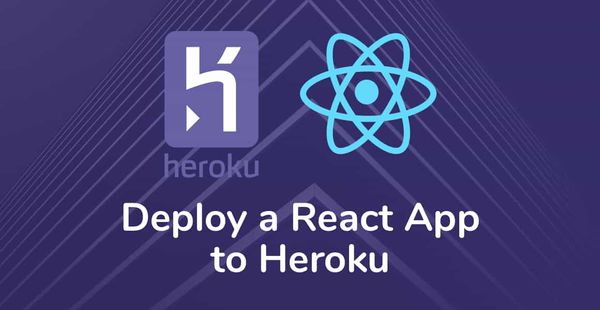Building MVP for Startups : The Ultimate Guide
In the world of software development, a unique idea is like a spark that can ignite a wildfire. It has the power to captivate an audience and revolutionize an industry. But too often, we see startups pour their heart, soul, and wallet into a product only to find out too late that they're solving a problem that doesn't exist.
The idea of investing significant resources into an untested product can keep many entrepreneurs up at night. As a product owner, it's critical to ensure that your solution meets the fundamental needs of your target audience. And that's where the concept of Minimum Viable Product (MVP) comes in. So, before you take the leap, let's discuss everything you need to know about building MVPs for startups.
What is an MVP?
MVP is like a secret weapon for startups - a way to test your product with minimal investment and validate your assumptions before fully committing to development. Think of an MVP as the skeleton of your product. It's the simplest version of your idea with a carefully designed and curated set of features that help you validate your product idea with the least amount of resources.
An MVP is not just about creating a prototype; it's about building a feedback loop that enables continuous improvement. It focuses on four key elements: the value proposition, customer segment, channel, and customer relationship. By honing in on these components, you can create a product that speaks to your target users and solves their problems effectively.
Why develop MVP for startups?
Don't risk everything on a product that hasn't been tested. Here's why every startup should prioritize MVP development:
- Cost-efficient: MVP development helps you test your idea without spending a fortune.
- Quick market entry: Launching an MVP allows you to enter the market quickly and start generating revenue.
- Smart use of funds: MVP development helps you avoid blind investment by testing the market response to your product.
- Real user feedback: MVP development provides valuable feedback from real users, helping you improve and refine your product.
- Investor appeal: MVP development makes your project safer for investors and more attractive to potential funders.
Also read: Importance of MVP in Software Development
Factors to keep in mind when you build an MVP
When building an MVP, you need to keep several factors in mind. Here are a few of them:
- Get to know your users: Successful MVPs are built with users in mind. You should have a clear understanding of your target audience's pain points, desires, and behaviors. Engage with potential users through interviews, surveys, and focus groups to gather valuable insights. This user empathy will help guide your product decisions and ensure that your MVP is meeting real user needs.
- Keep it simple: Keep your MVP simple and focus on the core features that provide the most value to your users. Avoid over-complicating your product with unnecessary features that can distract users from your main offering.
- Build a strong foundation: Don't get bogged down by too many technical details. Rather than trying to create a fully-featured product from the get-go, focus on building a strong foundation that can be iterated upon over time.
- Embrace failure: Building an MVP is not a guarantee of success, but it's an important step towards achieving it. While it's natural to hope for success, it's important to embrace the fact that failure is a possibility. By acknowledging this reality and adopting a growth mindset, you can approach MVP development with a sense of curiosity and openness, and learn from each step of the process.
How to build a minimum viable product?
Building an MVP requires a systematic approach. Here are the steps to build an MVP:
- Brainstorm and generate ideas. Research the market and identify problems, target audience, and competitors.
- Establish the purpose of the product and define unique selling points.
- Work with designers, developers, and innovation partners to turn ideas into viable products.
- Develop a minimum viable product (MVP) with core functionality.
- Showcase the MVP and gather feedback from the target audience.
- Utilize feedback to modify the product and continue iterating and improving.
Also read: Cost to build an MVP
Best MVP testing practices
Don’t let your MVP go untested. Here are a few MVP testing practices you must implement:
- Collect customer feedback: Speak to potential customers and gather feedback to identify the problem you're solving, and validate your solution.
- Crowdfunding: Use crowdfunding platforms to pre-sell your product, gauge interest, and raise funds.
- Explainer Videos: Engage your audience and demonstrate your product’s value proposition with creative and compelling explainer videos.
- Landing Pages: Develop a dedicated landing page that describes your MVP, captures leads, tracks user behaviour and measures engagement.
- A/B Testing: Experiment with different versions of your MVP and use A/B testing to identify the best-performing version.
- Concierge MVPs: Provide a personalized experience to a small group of customers to test your product’s functionality, usability, and overall customer experience.
Accelerate your idea to market with Logicwind's MVP development services
Creating an MVP is not a walk in the park. It requires careful planning, research, and execution to ensure that the product meets the needs of your target audience.
To create a successful MVP, you need a solid business model, careful planning, research, and an MVP development company that you can trust. That's where Logicwind comes in. With our years of experience and expertise, we can help you create a winning MVP that will resonate with your target audience.
To get started, we work closely with you to understand your business model, goals, and objectives. We then gather information about your target audience, their needs, and pain points.
Armed with this information, we will create a prototype of your MVP, test it, and refine it based on user feedback. We follow an agile methodology to ensure that your MVP is delivered quickly and efficiently. Let us help you turn your idea into a reality. Contact us today to get started.
FAQs
Q: What should a Minimum Viable Product (MVP) include?
A: A Minimum Viable Product (MVP) should include core functionality, a user-friendly interface, reliability, data collection, user feedback, platform compatibility, and scalability considerations. Its goal is to validate ideas and gather feedback.
Q: How do I prepare for an MVP for my product?
A: To prepare for an MVP (Minimum Viable Product), follow these steps: Define goals and core features, understand the target audience, prioritize essential features, create a user journey and prototype, gather feedback and iterate, thoroughly test, set clear metrics, plan for scalability, communicate effectively, and embrace continuous improvement.
Q: How long should it take to build an MVP?
A: The time to build an MVP varies based on factors like product complexity, team expertise, available resources, and goals. Typically, it takes a few weeks to a few months. Prioritizing speed and simplicity is key for gathering user feedback and validating the product hypothesis.




